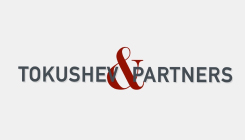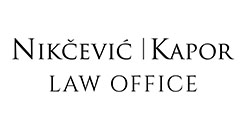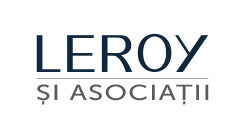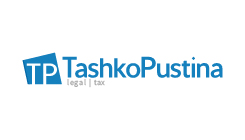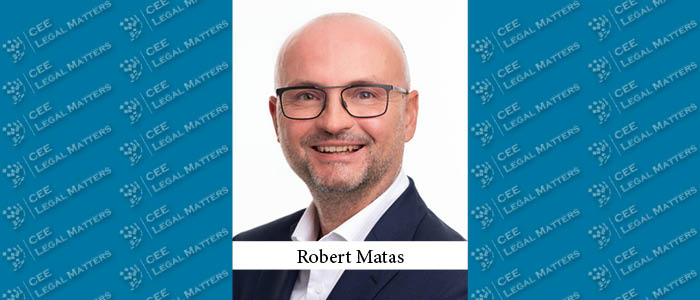You load the picture from your recent gathering of friends on Facebook. Immediately, and by itself, the website defines all the persons who are in the photo: surnames, age, habits, personal life. Everything is in the social network.
How to Prepare for the New EU Privacy Law? Tips and Suggestions for GDPR Compliance
As it is widely known, the General Data Protection Regulation (216/679 (EU)) (GDPR) was announced on April 27, 2016 and will be applicable as of May 25, 2018. Simultaneously the 95/46 EC directive (the “Directive”) will be set aside. Although the GDPR’s main concepts and principles are much the same as those of the Directive and thus the national data protection acts, the GDPR does prescribe certain new obligations (such as the DPO, the right to data portability, etc.) and a much higher limit of fines, suggesting that privacy will be taken more seriously in the future.
Doing Business But Keeping Personal Data Safe
As personal data privacy is increasingly considered an important human right deserving protection, and with the new EU Data Protection Regulation to become enforceable in Romania as of May 25, 2018, it is becoming more and more important for corporations not only to observe the general data protection rules on commercial transactions but also to ensure full internal legal and technical compliance for all employees having access to any personal data processed internally.
The Use of New Technologies in Modern Banking and Their Impact on the Legal Function with a Specific Overview on Legislation in Republic of Serbia
In a world where technological innovation grows so fast, a need to transform banking services from the classic model in which the client’s presence is required in the bank’s premises leads us to the new form of selling of the classic bank’s products.
Is software eating the legal profession?
“Software is eating the world,” observed entrepreneur and Hewlett Packard Enterprise Board member Marc Anderssen in his influential Wall Street Journal essay half a decade ago. Software’s appetite still seems insatiable as it continues to digitize bigger and bigger chunks of our analogue world. Hybrid cloud and edge computing, photonics and persistent memory, virtual and augmented reality, and artificial intelligence (AI) are the innovations that will harness the digital imprint of our reality for our benefit.
On Robo-Lawyers and Program-Based Lawyering
The reasonable reduction of costs is deemed an obligatory tactic of doing business. In this paradigm, performance of legal work by program, instead of lawyers, is considered to be beneficial. Such an approach can be reasonable if the protection of the employer’s interests is guaranteed to stay at least at the same level. The methodology seems obvious: automation of legal work, use of online services and blockchain systems, and solutions based on artificial intellect.
How General Counsel Can Weather the Digital Storm
EY is one of the four largest professional services networks in the world, together known as the “Big Four.” For a long time, the professional services industry was viewed as traditional and conservative, with the first professional services provided by legacy firms more than 110 years ago. However, it is undergoing fundamental changes today – the digital disruption poses challenges to all industries, and the professional services sector is no different.
Technology: Tool or Replacement?
More than 20 years ago, I was introduced to the Sophists Aristotle, Socrates, Euripides, Plato, and Protagoras: The first lawyers of the world.
Technology And Its Impact on The Legal Function
You’ll read in this issue stories from other colleagues’ experience - that is, stories from the past. I will try a different approach and will give you instead a story from the future. This will be about how technology helps with resource optimization – which is what those with a less rich vocabulary mean when they say “doing more with less.”
Brave New (Technological) World: Adapt or Fall Behind
The rapid development of technology and its impact on our daily lives can be witnessed in everything we do. From e-commerce to remote control of the temperature at our homes, technology has changed the way that we manage our daily tasks. Similarly, in the legal industry, technological developments – from advancements in standard legal tasks to big data analytics – are all taking center stage in the work being done to improve the provision of legal services.
Achieving Trust and Compliance in the Cloud
The accelerating shift from traditional on-premises information technology (IT) systems to cloud computing presents in-house counsel with a veritable obstacle course of compliance challenges and regulatory pitfalls. Virtually every industry today faces an expanding set of data security demands, while different countries often have their own unique privacy and data protection requirements.
My Ethics & Compliance Journey
I have been working for Tesco for almost eight years, and when I joined the company, “compliance” was absolutely not a focus. We certainly followed values like “no one tries harder for customers,” but we did not know too much about compliance and about how important it should be for a well-organized company in the 21st century.
How To Break Through “Compliance Noise”
Compliance Matters
The role of the in-house legal counsel in recent years has become intensely intermingled with compliance matters, which are of huge importance for international corporations. For example, American companies place great importance on anti-corruption compliance, and the U.S. Foreign Corrupt Practices Act is widely known and complied with in Europe due to its extraterritorial application.
Where is the Added Value of the Legal Department
It is good to have at least general idea of the answer to the question of where the added value of the legal department lies, otherwise you might become a very expensive administrator whose contribution to a company success is questionable.
The Y-Way to the 21st Century
The rapid transformation (one could almost say the revolution) of the world of legal services is a fact and has been taking place for some time now. In fact, I believe it is now gaining its full momentum. This transformation affects both law firms and in-house legal departments. It started several years ago with cost-cutting, as clients expected more and more for less and less: in-house legal departments from external law firms, and internal clients from in-house lawyers. More changes followed.
Tackling the General Counsel Role
The legal department is one of the support functions in an organization which is, or at least should be, constantly evolving together with the organization it supports. It cannot be too static or too inconsistent in its approach and way of handling the organization’s legal matters.
The In-house Counsel Role: Developments and Challenges
The method of providing legal services has changed a great deal over recent decades. This is true both globally and in CEE, which has been integrating rapidly into the global economy. In this process, local subsidiaries in the region have absorbed key trends and practices from their Western headquarters, business processes have upgraded and developed, and business itself has become more cross-bordered and technologically advanced.
From Speedbumps to Collaborating Partners: The Continuing Evolution of In-House Legal Services
Years ago, when a group of in-house lawyers entered the elevator of a bank, someone would mock, “Wow, what a bunch of handbrakes!” While this did not personally happen to me, I am well aware that internal legal counsels are often referred to as “problem factories” or “speedbumps” – the couriers of bad news, best to be avoided. I must admit, this scorn was not without reason. But, should this necessarily still be the case? In my view, not any longer.




















